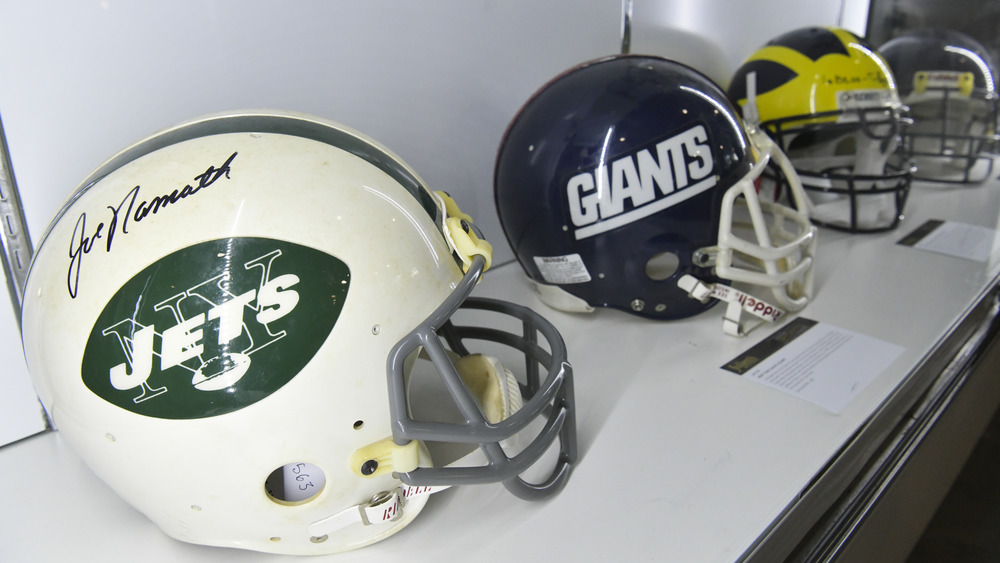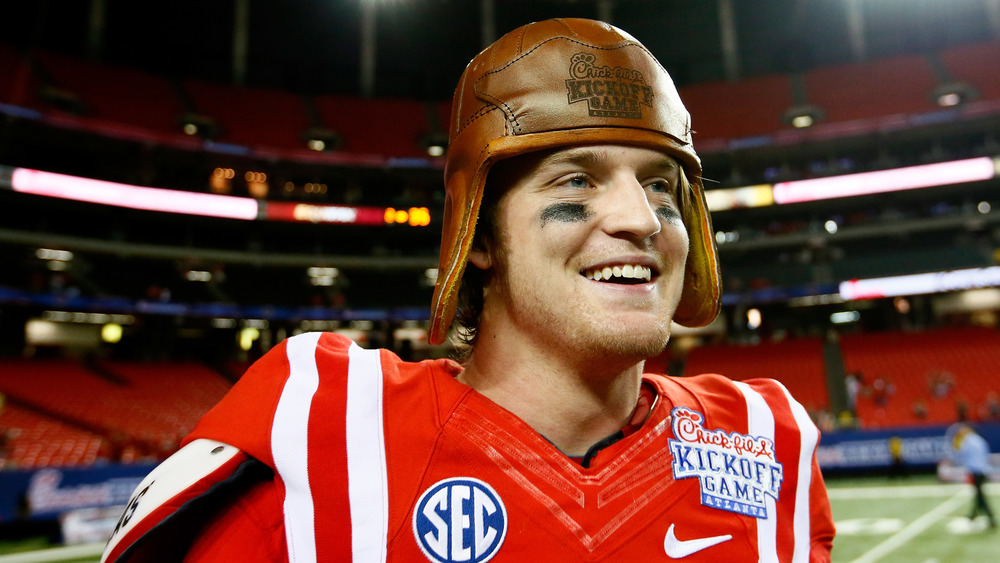The Evolution Of NFL Helmets, From Leather To Polycarbonate
The protection given by football helmets is serious business, with some companies making just the padding and protection inside, and others designing the perfect protective facemask. Four major brands helm the market, according to the Associated Press: stalwarts Riddell and Schutt, and the more recent VICIS and Xenith. But all work with one goal in mind: to create the best gear possible. "Competition is good for everybody," said Thad Ide, senior vice president of research and product development at Riddell to the AP. "Competition keeps everybody moving fast, keeps everybody on their toes and wanting to bring new, better things to the field."
Helmets, once made of hardened leather, now are hard polycarbonate shells. Inside, the head is nestled by layers of padding and secured by a chinstrap. Metal bars line the face mask, ensuring even more protection. This is a far cry from the first time that headgear was used in the game. That was 1869, when halfback George "Rose" Barclay from Lafayette College donned a gadget with straps to cover his ears, reported 2ndSkull.
Whether or not this was the first helmet is under some debate — Joseph M. Reeves, a U.S. Naval Academy Midshipman, wore a moleskin headgear for an 1893 Army-Navy game, and some credit him as the originator. Whoever came up with it, the original will be a far cry from what will be worn during this year's Super Bowl.
From leather to high-tech helmets
The Riddell Company created the first plastic helmet in 1939, which had a face mask and included extra padding for more protection. The plastic retained its shape during collisions. The NFL began requiring helmets in 1943, according to Sports Rec, and began using the plastic ones 10 years after their invention. Face masks became required by 1962.
In the following decades, other innovations were added to improve the wearer's safety and to decrease injuries. In early 2000, the importance of the helmet's structure underwent scrutiny as awareness heightened about concussions and their ramifications on players. "The helmet will never be expected to fully prevent concussions or other head trauma, but the advancements in recent years are making a major difference," the NFL said to Insurance Journal.
Four years ago, the NFL made it a priority to collect data on helmets and head injuries to better track how and when injury-causing incidents occurred, and then shared the data with manufacturers. The NFL in partnership with the NFL Players Association also tests any new helmets to ensure their safety.
"Almost all players are now wearing helmets that receive top ratings for performance, a marked increase from just two years ago," according to the NFL. Today, the making of a helmet is increasingly high tech. Riddell, for instance, has 3D mapping and can fit every helmet to the unique shape of the head that wears it — something that might become commonplace in the future.

